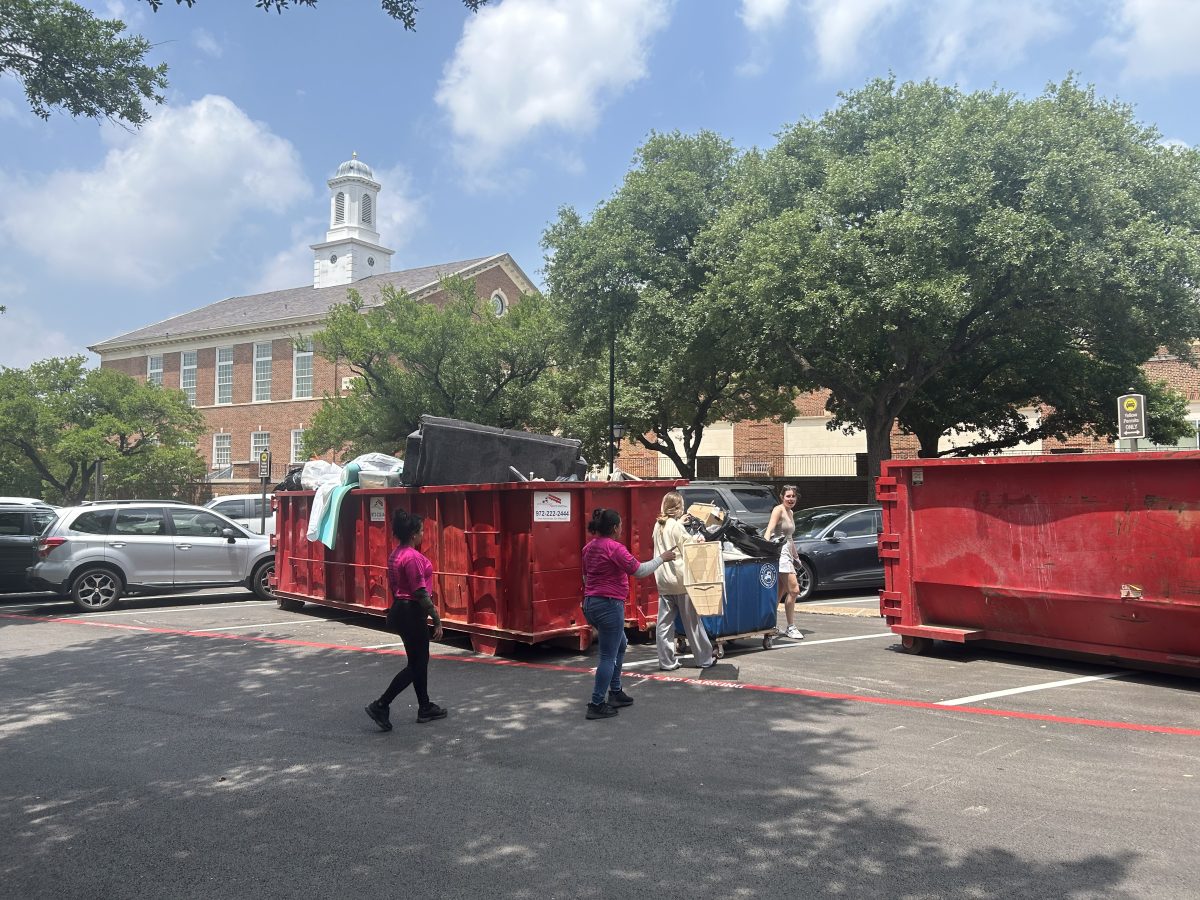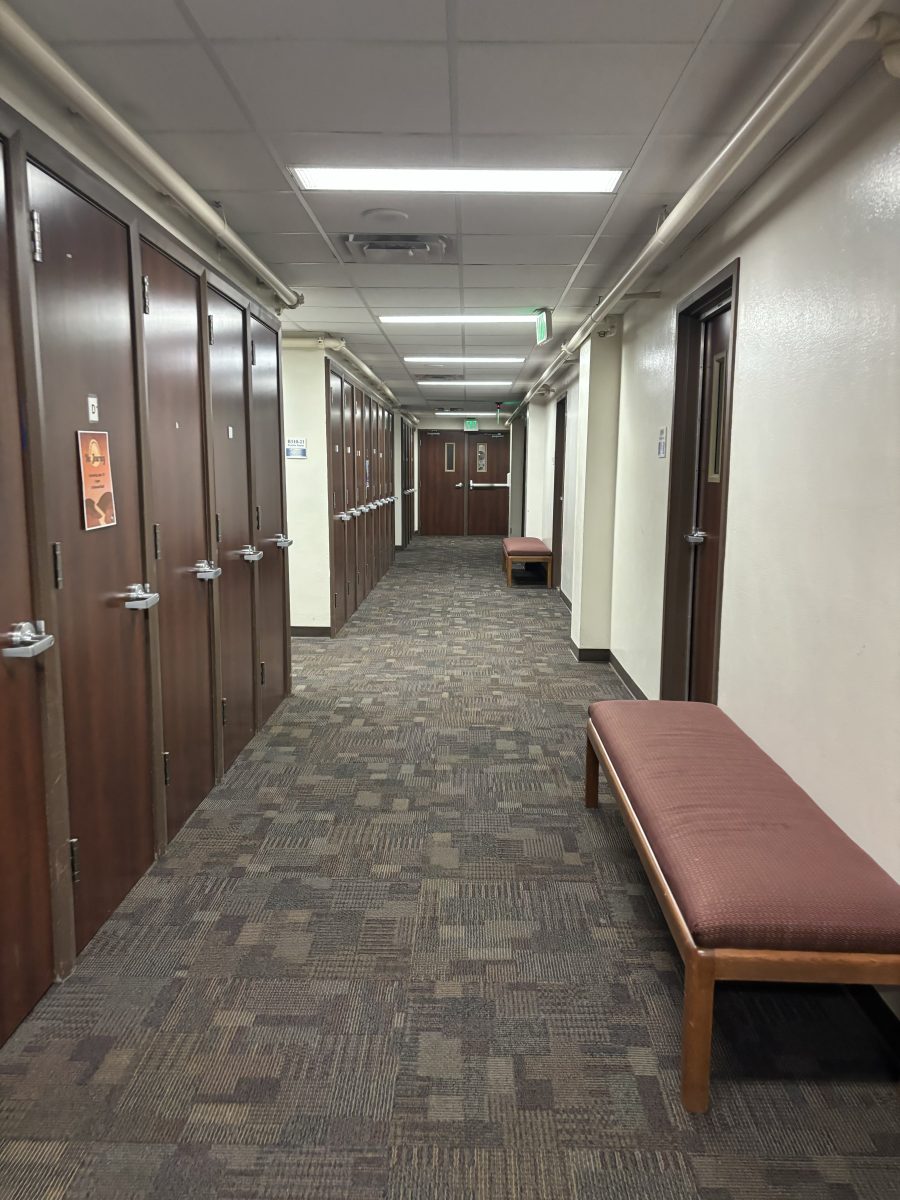
Candidate turns classroom into pressroom
Former Dallas mayor and current U.S. Senate candidate Ron Kirk paid a visit to students in professor Helen Perkins’ education class Thursday.
However, as the Democratic candidate spoke about the importance of recruiting and retaining quality educators, a huddle of cameras and microphones with their lights blinking and tape rolling were teaching students another lesson – one in managing a political campaign.
As campaigns gear up for November elections, hopeful candidates will increasingly make stops at university campuses, a venue that can provide access to younger voters and a conduit to an well-educated electorate.
“College campuses are ready-made campaign venues,” political science professor Cal Jillson said. “They’ve got big rooms, a pretty setting and lots of people in a concentrated setting.”
Matching the message to the venue.
Kirk, who is running against Texas Attorney General John Cornyn for the Senate seat vacated by long-time Sen. Phil Gramm, visited campus to emphasize the importance of teachers in front of a class of future educators.
“[Kirk believes] that teachers deserve to be treated as the professionals they are,” said Nefeterius McPherson, a deputy press secretary for the Kirk campaign. “This speech was directed at a targeted group of SMU students – the next generation of talented teachers.”
When the Kirk campaign approached Perkins to see if it would be possible for the candidate to speak during her class, she was delighted.
But as the cluster of cameramen in the back of the classroom on the day of the speech attested, her students were not intended to be the sole recipients of Kirk’s message.
Perkins said that the Kirk campaign insisted that cameras be allowed in the classroom.
“I don’t think the media had an impact [on the students,]” Perkins said. “I didn’t want them there, but they weren’t distracting to the class.”
While the cameras may not have provided a diversion to the students, they were an essential component of Kirk’s visit.
“Personal contact [with candidates] tends to rouse enthusiasm,” said Rita Whillock, a corporate communication and public affairs professor. “But how does a senator who represents a state as large as Texas hope to communicate to the millions of people unless the mass media is used and used strategically?”
Judging by the preparation of the Kirk campaign, his message was meant to reach a mass audience. The evening before, a press release was sent to numerous media outlets announcing the visit. Also, Kirk’s choice of venue may have been based on more than just his target audience, Whillock said.
“Every candidate wants to put his message in a setting that resonates,” she said. “If your issue is education, you would like to have that background. Viewers are more likely to recall the issue if the visual is used as a memory device.”
Not content to let its opponent steal the spotlight, the Cornyn campaign sent its own supporters to campus in hopes of deflecting attention from Kirk’s message.
“That’s a sign of a well-organized campaign,” Jillson said. “If you can organize your own campaign and with your left hand cover the opponent’s events as well, it’s all for the greater good.”
During an impromptu press conference after Perkins’ class, several Cornyn supporters waved signs with anti-Kirk slogans in front of the cameras.
“We wanted to get the message out that Cornyn will represent you whether you’re 18 or 85,” said John Sandler of the Cornyn campaign.
Bridging the age gap.
In the past, political candidates have made stops on college campuses in an effort to energize younger voters to head to the polls in November.
“Every campaign wants to make a pass at younger voters,” Jillson said. “However, when only 20 to 25 percent of that voting group is going to turn out, [as a candidate] you’ll have much better luck at a senior center when you can get an 80 percent turnout.”
For a campaign with little money and large-scale promises to affect reform and change, focusing on the youth vote might be an effective strategy.
In 1972, presidential candidate George McGovern made a concerted effort of visiting campuses and courting the younger vote. McGovern lost to Richard Nixon with only 38 percent of the popular vote.
“Of course when you’re courting any group with identifiable interests, you have to be careful of making expansive promises that you will have to explain in other venues,” Jillson said.
When Colin Powell appeared on MTV during the 2000 presidential election to talk about sex and abortion issues with young voters, conservative Christians questioned Powell’s views further down the campaign trail.
In making appearances targeted at young people, ideally a candidate will give the same message but in a language more approachable to young voters, Jillson said.
Political candidates have still not found an entirely effective strategy for getting them to the polls.
Whillock cites a number of strategies that have worked with some success.
“Students are high-end Web and e-mail users,” she said. “Candidates are learning that information-rich Web sites are more appealing to young voters than traditional advertising.”
Several recent strategies have focused on using politically active students as opinion leaders in their communities. From using them to stuff envelopes or call voters and employing them in staff positions, students are often some of the most valuable employees of a campaign. However they’re used, they tend to talk about what they’ve heard and seen with their friends, family and professors.
“By appearing on campus, MTV-like shows, late-night talk shows and concert-like settings, candidates are learning to create a buzz among young voters,” Whillock said.
Earlier this summer, Janet Reno threw a dance party at Miami’s trendy nightclub Level in hopes of attracting a younger audience to her campaign against Florida governor, Jeb Bush. Although the event garnered national media attention, the campaign won’t know until November how successful the tactic was.
“The studies have not been done to confirm any conclusions about the effects of such buzz,” Whillock said, “but the emerging conventional wisdom is that voters will turn out when they feel they have a greater familiarity with the candidate.”
As for Ron Kirk’s impression on SMU students, Perkins thinks it went well.
“I think [the students] were impressed,” she said. “They may not have agreed with everything he said, but they were impressed. They felt he was very sincere. He knows what’s going on in an urban school district.”










